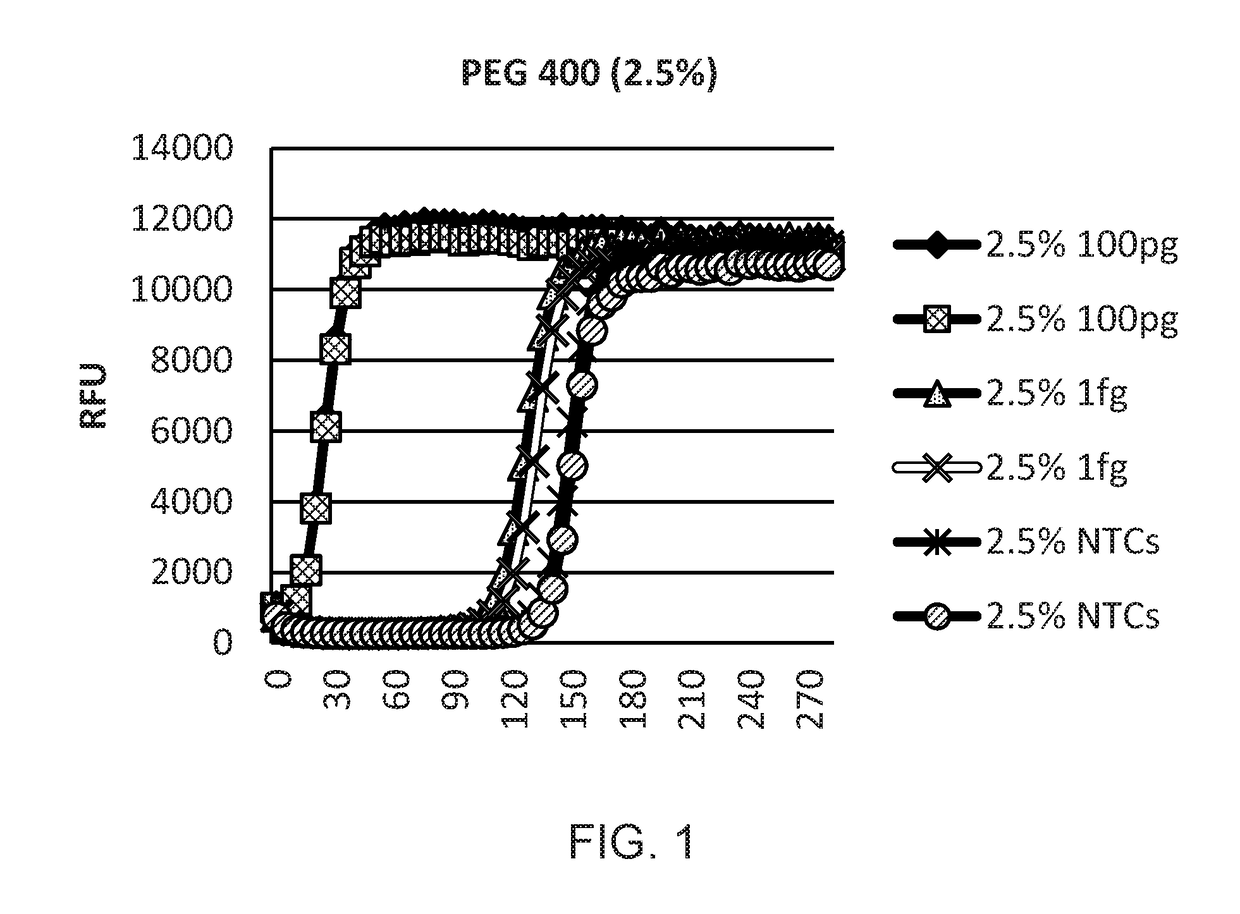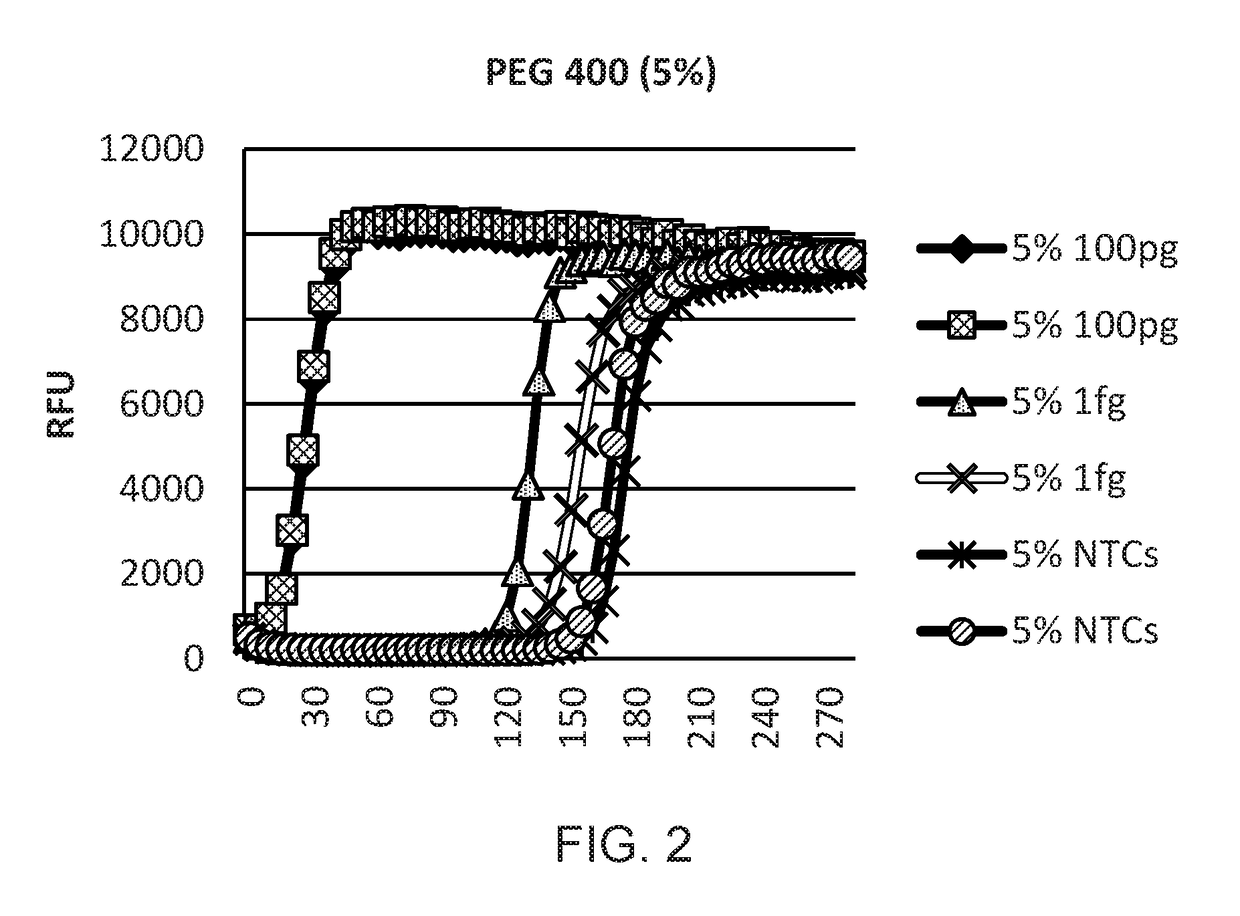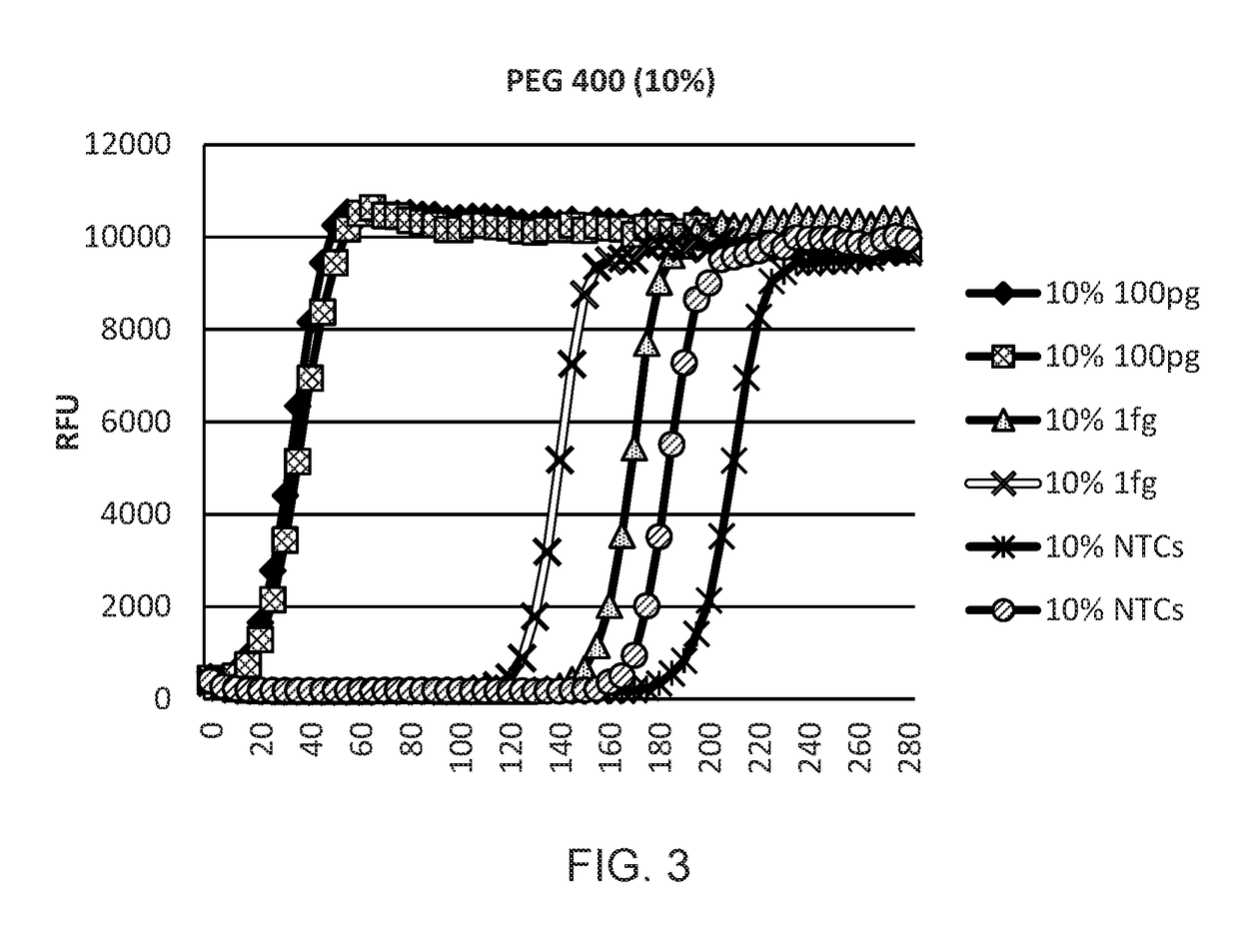Solid phase isothermal amplification
- Summary
- Abstract
- Description
- Claims
- Application Information
AI Technical Summary
Benefits of technology
Problems solved by technology
Method used
Image
Examples
example 1
Single Cell Whole Genome Amplification Methods
[0088]In this example, the WGA reaction mixture included the DNA condensation reagent PEG-8000, but PEG 4000, Ficoll 400 or trehalose are expected to work equally well for the same purpose.
[0089]Whole genome amplification of DNA derived from a single cell using Phi29 DNA polymerase was carried out as outlined below:
TABLE 2The Amplification of DNA from a single cell by whole genome amplification using Phi DNA polymerase 29—WGA Reaction Buffer composition.NameComponentsWGA Reaction Buffer90.91 mM HEPES, pH 8.036.36 mM MgCl20.018% Tween 201.82 mM TCEP3.82% PEG-800072.73 μM dN6 HexamerLysis Buffer400 mM KOH0.02% Tween 20DTT1M DTTNeutralization Buffer400 mM HCl600 mM Tris HClAmplification Mix8 mM dATP8 mM dTTP8 mM dCTP8 mM dGTP1x TE BufferEnzyme MixPhi29 Storage BufferPhi29 Enzyme 0.4 mg / ml
[0090]Protocol:
[0091](A) Pre-Amplification Clean-Up Step[0092]1. Mixed the components according to Table 3 below in a sterile PCR tube[0093]2. Mixed the re...
example 2
The Use of Condensing Reagents and Whole Genome Amplification with Phi 29
[0123]A study was designed to optimise WGA reactions using DNA condensing reagents such as polyethylene glycol 400, trehalose, Ficoll 400 and PEG 8000. PCR experiments were carried out using real time PCR on an ABI7900 real time Thermal Cycler.
[0124]Human genomic DNA (100 pg and 1 fg) was amplified with WGA and Phi 29 DNA polymerase. Amplification kinetics were monitored on a Tecan plate reader in real time by the addition of the DNA intercalating dye SYBR Green I (FIGS. 1-7). Clear separation was found between 1 fg samples and no template control (NTC) samples, demonstrating the sensitivity of the system and the effect of condensing reagents.
PUM
| Property | Measurement | Unit |
|---|---|---|
| Temperature | aaaaa | aaaaa |
| Mass | aaaaa | aaaaa |
| Mass | aaaaa | aaaaa |
Abstract
Description
Claims
Application Information
 Login to View More
Login to View More - R&D
- Intellectual Property
- Life Sciences
- Materials
- Tech Scout
- Unparalleled Data Quality
- Higher Quality Content
- 60% Fewer Hallucinations
Browse by: Latest US Patents, China's latest patents, Technical Efficacy Thesaurus, Application Domain, Technology Topic, Popular Technical Reports.
© 2025 PatSnap. All rights reserved.Legal|Privacy policy|Modern Slavery Act Transparency Statement|Sitemap|About US| Contact US: help@patsnap.com



